Thirty years ago, a young Frenchman working for the small beach resort city of Le Touquet in northern France had a great idea. A passionate motorcycle rider, he wanted to race his friends on the city's sandy beaches. He gathered 286 like-minded bikers and started a race that would become one of the legendary motorcycle races, the Beach Enduro of Le Touquet.
The young man's name was Thierry Sabine, and he later went on to found the famous Paris-Dakar rally. Unfortunately, Sabine died on January 14, 1986, in a helicopter crash while organizing that year's Dakar rally.Over time, the Le Touquet enduro grew to immense proportions. One thousand motorcycles take part in this mad event, with some 500,000 spectators from all over Europe coming to see the free show.Until last year, the race started on the beach, with a 6- to 8-kilometer long stretch, followed by a run into the sand dunes. The entry point in the dunes was always spectacular; seeing 1000 motorcycles trying to get through a small opening is a rare thrill.Due to massive protests from environmentalists over the last few years, with the race on again, off again, the organizers finally bowed to the pressure and permanently removed the dunes portion.In '06, a new formula for the Le Touquet race emerged. Called the Enduropale (a contraction of the word Enduro and the region's name, Cte d'Opale), the race is now only on the soft, sandy beach, with artificially constructed dunes in the form of large hills, jumps, bumps and chicanes.
Totaling 15.5 kilometers (9.6 miles), the long stretch used for the start is about 8 kilometers (5 miles) long. At the far end is the pit lane, used to refuel and repair the motorcycles. The race lasts approximately three hours, so all bikes need to be refueled at least once.The event runs over one weekend in a near-carnival atmosphere. It doesn't attract just bikers-many "normal" people come to see this spectacular event. Tens of thousands of motorcycles gather there, while the spectators camp out in the city. Many bring tents; others just sleep in the streets, on benches or on the beach. Mind you, the weather is freezing in February. Hotels are booked up a year in advance, while most restaurants operate in overcapacity. Everywhere you go there are people and motorcycles.
FridayFriday is the day all vehicles pass scrutineering. Nonroadworthy motorcycles can be seen riding around the city. The high-pitched cries of two-strokes mingle with that of the large-bore four-strokes for 24 hours. Sleeping is often not an option, unless you have earplugs.
SaturdaySaturday sees the first race. It's for the quads; some 240 of them are entered. The quad circuit is 7.8 kilometers (4.8 miles). Competitors can either ride on their own or in teams, one relieving the other in the pit lane.SundaySunday is the big day. Motorcycles are divided into three categories:
- Class 1: 0-125cc for two-strokes, 0-250cc for four-strokes
- Class 2: 125-250cc for two-strokes, 250-450cc for four-strokes
- Class 3: 250+cc for two-strokes, 450+cc for four-strokesAt 11:30 a.m., the bikes leave the Parc Fermee in a parade through the city. They arrive at the beach and line up immediately, since the start is usually minutes away. The exact starting time is never known until the very last minute. It depends entirely on the tide!When the start is given, the ground shakes as the 1000 motorcycles race away. The noise is thunderous, and the crowds cheer when the bikes race past. Sound levels reach dangerous proportions. Usually in the opening kilometer, the first mishaps occur. Many riders are not experienced in racing in soft and wet sand, but in such a tight, large group it would be a miracle if nothing happens. Motorcycles slip and slide, bumping into each other, causing riders to be separated from their bikes. Thankfully, the accidents are not too severe.It closely resembles the start of the Boston Marathon. There's a front-runner group, followed by a group of passionate amateurs and then amateurs wearing funny costumes. The Enduropale is no exception.The large group is trailed by a convoy of trucks and 4x4s; medical, technical and sweeper trucks follow the riders until the end of the track. Three medical evacuation helicopters are in the air at all times to intervene when necessary. With 60 motorcycle cops, 365 policemen, 75 private security, 160 firefighters, 180 race marshals, 200 support staff, two field hospitals, six first-aid posts, 14 doctors, one surgeon and 11 nurses, the organizers come prepared.
The RaceThe first part of the race is on. A monetary prize (1500 euros) is awarded to the first motorcycle that enters in the first turn after the straight.As he did last year, Frenchman Cyril Despres (dorsal #1, runner-up in this year's Dakar race) turned the holeshot! He had a specially prepared KTM 950 SE and his sole objective was to win the holeshot. Despres donated the money to the Fabrizio Meoni School in Dakar! Despres retired after two laps, since his motorcycle was too heavy to run in the loose sand of the circuit itself, and he was still suffering from the injuries he obtained during the '06 Dakar race.His lead in the first corner was enormous. He had been timed at 190 kph (118 mph) in the straight, something the smaller motorcycles could never achieve.He was followed by a large contingent of professional riders on a variety of motorcycles. They themselves were followed by the "rest," a big group of some 800 riders with different degrees of experience and dedication.The first corner led into the first hill, and became a major bottleneck, with hundreds of motorcycles trying to get into a good position. Motorcycles were strewn all over the place. Many had fallen, others had already broken down. The first half lap saw 23 motorcycles withdraw. Several had not even passed the quarter-lap marker.In the meantime, the professional riders were progressing. At the end of the first lap, Frenchman Timotei Potisek (#2) on a Honda was leading by a small margin. Potisek had twice already come in as runner-up, and he really wanted to win this time. The favorite, Arnaud Desmeesters (#6), was following on his Yamaha. Desmeesters was on a hunt to beat the record of the most number of wins. He was tied with Dutchman Kees van der Ven at five wins, and Desmeesters desperately wanted his sixth win.Official KTM rider, Frenchman Jean-Claude Mouss (#10), was hoping to give the Austrian motorcycle manufacturer a foot on the podium after 20 year's absence from the highest ranks.Once the professional riders reached the far end of the track, their riding style changed. No longer could they race full-out, trying to outmaneuver each other. Now they had to take into account all the lappers! With immobilized motorcycles, fallen riders, riders who had stopped to take a breather or just to take in the sights had become major moving or stationary obstacles. Dodging them at high speeds is an art form!Watching these pros dart through the field is amazing, a spectacle to be seen. Few other races in the world allows such a close contact between the top riders and the weekend riders.Each lap takes about 10 minutes for the top riders, while some private entries needed one hour to complete a lap.A quarter into the race, Potisek had installed himself in the lead. Desmeesters continued to fight for every inch, moving closer and closer. Not an easy task on a normal track, but here, with hundreds of riders between him and his target, it was an almost impossible objective.At the refueling, Potisek left the pit lane like a bat out of hell. He clipped another rider who had fallen at the base of a hill, avoiding him in the air by inches. It looked like he pulled the bike higher into the air in order to avoid the downed rider.Demeesters was not that lucky. His Yamaha ran into mechanical problems and he was forced to let Mouss pass him.Approximately three minutes away from the finish, Potisek had a choice. Since the race was to last three hours, he could slow down and pass the finish line at around the three-hour mark or continue at the high pace he had set. He chose the latter. In the meantime, hundreds of motorcycles had halted before the finish line; no one wanted to do another lap.So after three hours and 10 minutes, a jubilant Potisek crossed the finish line with his first-ever Touquet win. Mouss took second place just 1 minute 15 seconds behind the leader, while Pierrick Paget (#38) rolled into third place on his Yamaha one lap behind the leader.The new Enduropale was an enormous success, both with the riders and the public (though due to the cold weather, there were only 200,000 spectators).Riders from France, Belgium, Germany, Italy, The Netherlands, Columbia, Switzerland, Australia, Austria, Luxembourg, Ireland, Sweden, the UK and Finland attended this race. Funny, there were no American riders in this top competition! Maybe next year...Contributor Mike Werner runs an interesting Europeon-based blog, www.motorbiker.org.
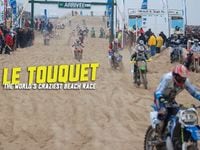
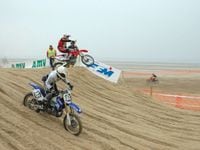
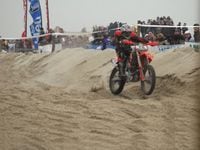
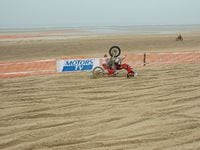
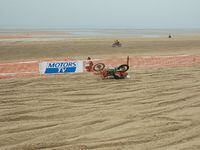
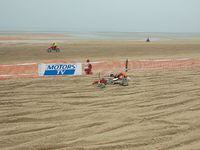
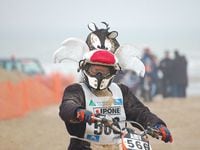
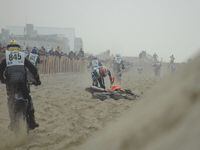
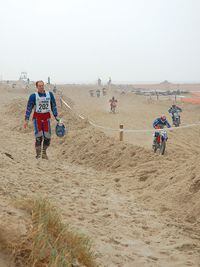
/cloudfront-us-east-1.images.arcpublishing.com/octane/IVKKCUZP4FGVVFAOSKNGVJPLTE.jpg)
/cloudfront-us-east-1.images.arcpublishing.com/octane/F3OM6J6WCFH7ZF5EAZCQGBHTWU.jpg)
/cloudfront-us-east-1.images.arcpublishing.com/octane/PGDRMBXTKRGXRMEG6V44XCNXVQ.jpg)
/cloudfront-us-east-1.images.arcpublishing.com/octane/4YKESZJV4NDHPAOH4HITU7B52A.jpg)
/cloudfront-us-east-1.images.arcpublishing.com/octane/BZOFBHJS4FEINH5LGU7H2IDOZU.jpg)
/cloudfront-us-east-1.images.arcpublishing.com/octane/XXNQVQXSI5BFRC2IP2QC5YZ5D4.jpg)
/cloudfront-us-east-1.images.arcpublishing.com/octane/5GNZUHLUQZB37G6YOQEQNQ6VUI.jpg)
/cloudfront-us-east-1.images.arcpublishing.com/octane/2RSCK6OA7VGAPNNIV3PRFSIYEU.jpg)
/cloudfront-us-east-1.images.arcpublishing.com/octane/TBIAOTHQEVAWRH4RI6QHPUO5PY.JPG)
/cloudfront-us-east-1.images.arcpublishing.com/octane/OB2TZF3FIBDZHHYHJZ6LRHR3S4.jpg)
/cloudfront-us-east-1.images.arcpublishing.com/octane/DZ2HBSSXKBEZLGE574PHVN4WYI.jpg)
/cloudfront-us-east-1.images.arcpublishing.com/octane/5BWOS5DC5FHHPHLVU43RSA5BTE.jpg)
/cloudfront-us-east-1.images.arcpublishing.com/octane/I3MFYOGNRFG3TPJQ6S7DHVCCQM.jpg)
/cloudfront-us-east-1.images.arcpublishing.com/octane/6LEF2ZUVXFB3ZFYRIP7LI5TZSQ.jpg)
/cloudfront-us-east-1.images.arcpublishing.com/octane/XXYEOEIX6FASTJCWHM5354VR5Q.jpg)
/cloudfront-us-east-1.images.arcpublishing.com/octane/NJWIDU775NECBOSYOGESM6OIMY.jpg)
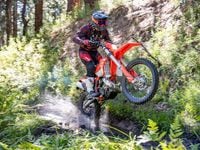
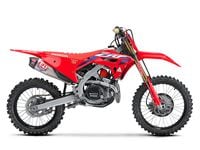
/cloudfront-us-east-1.images.arcpublishing.com/octane/322NRYLOUVD2FP72XICUQDEUTY.jpg)
/cloudfront-us-east-1.images.arcpublishing.com/octane/TT7Y2HUFOFF3RK4BQBMIFR7WGU.jpg)
/cloudfront-us-east-1.images.arcpublishing.com/octane/M23QJHVQ2ZDYPH5FZCBQJ2KXLA.jpg)
/cloudfront-us-east-1.images.arcpublishing.com/octane/HHQFFZYU6FFHTFSQRMPPYT35HU.jpg)
/cloudfront-us-east-1.images.arcpublishing.com/octane/7FCUDZHB3JBIHDW72FQBWIMBAU.jpg)
/cloudfront-us-east-1.images.arcpublishing.com/octane/X2C5PKAJAVDDXK6HNVQXT2Z6EE.jpg)